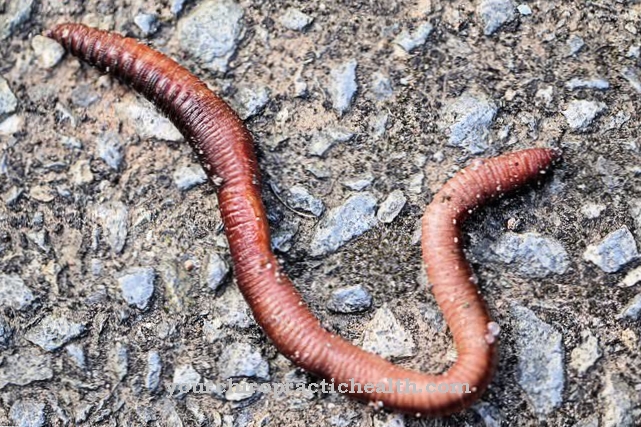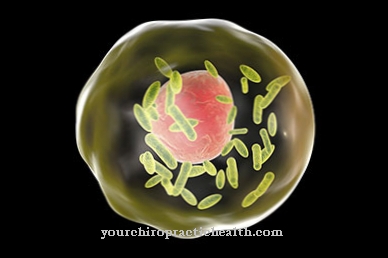The Catnip belongs to the lip flower family. The name of the robust, perennial plant comes from the fact that cats are attracted to the essential oils of the plant. The slightly euphoric effect on people is less well known.
Occurrence & cultivation of catnip

The Real catnip can reach heights of growth of 69 centimeters up to one meter. On their upright, square stems, up to seven centimeters long, pointed and hairy leaves appear. The white to pale blue flowers appear in July. The brown seeds form on the spike-shaped inflorescences in autumn.
A special feature of the seed pods is that they retain their ability to germinate for five years. Catnip is characterized by a bitter smell reminiscent of lemon. The original home of the catmint is in Africa and southern Europe. The plant has also been found wild in Central Europe since around 1750. Catnip is found on hedges or roadsides up to an altitude of 900 meters.
Particularly in the foothills of the Alps, the Neckar-Main region in Schleswig-Holstein or the Weser Uplands, there are rich natural occurrences. In some areas of Germany, however, the population is also declining. The plant prefers to thrive on dry and nutrient-rich loam or sandy soil. Lots of sun and light encourage growth.
Nitrogen supplies are also beneficial for the plant to thrive. The plants are hardy and very robust and particularly suitable for beds or balconies. Catnip is easy to grow yourself by sowing it. The plant can be propagated by cuttings or by dividing the rootstock.
Effect & application
Catnip was already used in the Middle Ages. For example, it has been used as a condiment for meat. Much earlier, the plant was valued for its medicinal properties. Proof of this is a didactic poem written by Abbot Walahfrid Strabo from the year 827. John Gerald described the appearance of plants as early as 1597 in a plant book.
Today the catnip is widely known as a component of various cat toys. The palette ranges from the plush toy mouse to the cuddly pillow, which is filled with catnip herb. In general, the plant is commercially dried, roughly cut or offered as an essential oil.
Essential oils can be used for aromatherapy, added to bath water or can also be used to repel insects. If cats come into contact with the plant, they get into an almost intoxicating state and wallow in ecstasy on the ground. Female cats in particular respond to the herb.
Researchers have shown that kittens or older cats, on the other hand, show little reaction to the herb. The ingredients of catnip are also important for humans and the plant is said to have a relaxing, detoxifying and digestive effect. The dried leaves are drunk as tea, and the plant is also smoked to take advantage of its slightly euphoric effect.
Importance for health, treatment & prevention
A tea made from catnip herb can have an antispasmodic, relaxing, fever-lowering and digestive effect. For this, two tablespoons of dried cabbage are poured over 0.25 liters of hot, but not boiling water. The brewing time for the refreshing drink is five minutes. If the tea is to develop its healing properties particularly intensively and to help against acute complaints, the steeping time can be up to 20 minutes.
If the fresh leaves are chewed, they can help relieve toothache. The effect as a drug plant is generally controversial. Some people use the herb as a substitute for marijuana. Catnip is smoked on its own or in combination with tobacco. The effect is rather small and is usually only noticeable after regular consumption.
Calming and a positive body feeling can be the result. Users also report optical changes in color perception. Colors are perceived more intensely and if the eyes are closed, then slight visions can occur. The slightly euphoric effect of catnip manifests itself in a good mood and eloquence in humans.
Catnip is collected during the flowering period, dried and used for medicinal purposes. The plant contains essential oils, tannins, camphor, thymol, fatty acids or various other substances with health-promoting properties. The fresh, lemony scent not only attracts cats, a slight mood-enhancing effect can also be observed in humans when a tea is brewed from the dried herb.
An infusion of catnip herb helps with colds, fever, gout, irritability or insomnia. The drink is also said to provide relief from diarrhea and colic. This requires regular consumption and the tea should be drunk at least three times a day. The tea is also given to prevent infections.
The calming effect of catnip was already proven in studies in the 1970s. Drunk before a meal, tea made from catnip will whet your appetite. Enjoyed after meals, it has a digestive effect. In cats, the healing effects can be used to the effect that the animals relax more quickly and the urge to move can be activated by catnip. This is particularly important for owners of lazy or extremely overweight animals.
However, if the animals react too strongly to the herb, it should not be used. The catnip is one of the lip flower family. The name of the robust, perennial plant comes from the fact that cats are attracted to the essential oils of the plant. The slightly euphoric effect on people is less well known.



















.jpg)








